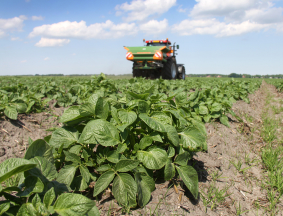Fertile soil is a basic requirement for optimum yield and quality. Soil analysis gives you a clearer picture of the soil, enabling you to apply fertilisers in a targeted way before planting and to optimise tillage.
However, even when the soil is well prepared beforehand, this is no guarantee that the growing season will go well. What effect does the fertiliser have and how is the soil reacting? How much has been absorbed by the crop? How much follow-up feeding is required?
SoilCropMonitor will answer these questions for you, as it provides an insight into the condition of both the soil and the crop. Both major and trace elements are measured.
The analysis is made up of two parts:
These two analyses are carried out at the same time. The crop analysis measures the nutrients in the crop, i.e. are there too many or too few nutrients available? The soil analysis provides insight into the nutritional status of the soil during cultivation and how much will be available for future growth.
The report gives you advice that takes into account the subsequent delivery from the soil and is presented in two parts: advice for a four-week period and advice for until the end of the cultivation. Soil Crop Monitor is available for a wide range of arable crops, maize, flower bulbs, fruit and outdoor vegetable crops.
More information
| Name | Date | File |
|---|---|---|
| Brochure Soil Crop Monitor | 26-01-2021 | |
| Sampling protocol Soil Crop Monitor | 09-04-2024 | |
| Soil Crop Monitor list of crops | 23-04-2024 | |
| Practical examples Soil Crop Monitor | 12-04-2024 |

